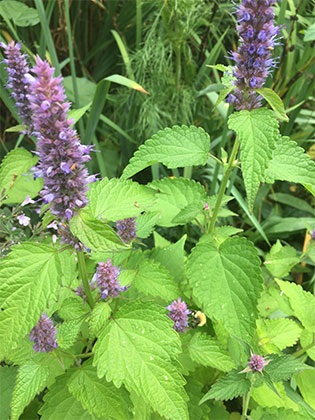
- Herb
- Food forest
- Bees and butterflies
- Edimentals
- Medicinal
Korean Mint
Agastache rugosa
Aromatic herb in the mint family. Leaves are edible and have an aniseed flavour.
PLANT TYPE Herb
PLANT HABIT Perennial
USES Culinary, Medicinal, Pollinators, Ornamental
DESCRIPTION
Korean mint is an aromatic herb in the mint family. Leaves are edible and have an aniseed flavour. Beautiful purple flower spikes makes this an edimental and a favourite of pollinators. Used in extensively in Chinese medicine, and it is particularly used as a cure for hangovers. Young leaves can be consumed raw or cooked. Strong anise-like fragrance, they are normally used as a flavouring or as an addition to the salad bowl, and makes a pleasant tea. Useful in desserts and drinks.
Low maintenance, and drought tolerant. Likes full sun and well drained soil.
Great plant for cut flowers and cottage style gardens.
RECOMMENDED LOCATION Pot, Forest garden, Wildlife garden, Ornamental garden
Aspect Full sun
Height 120cm
Spread 60cm
Hardiness Short lived perennial
Management and care Dead heading will encourage additional flowers. Agastache rugosa is found growing in grassy places in mountains, especially by streams, and in valleys. Does best in dry, well-drained soil high in organic matter.
Origin/history
The plant is native to moist grasslands, valleys and stream banks in East Asia - China, Japan, Korea, Russian Primorye, Taiwan, India, and Vietnam.
Commonly used in Chinese herbalism, where it is considered to be one of the 50 fundamental herbs.
It was traditionally used to relieve nausea, vomiting and poor appetite.
